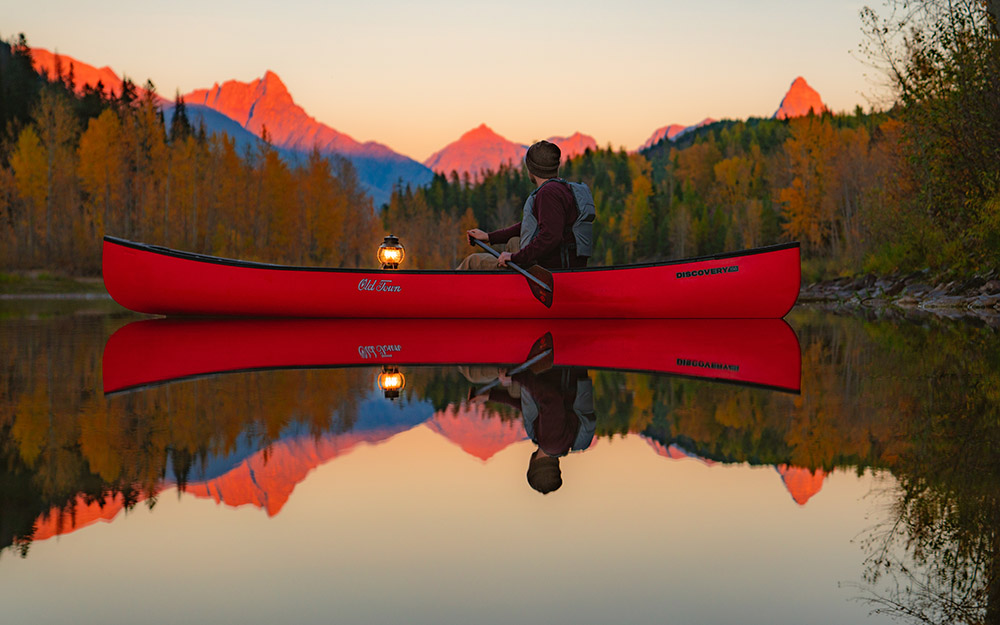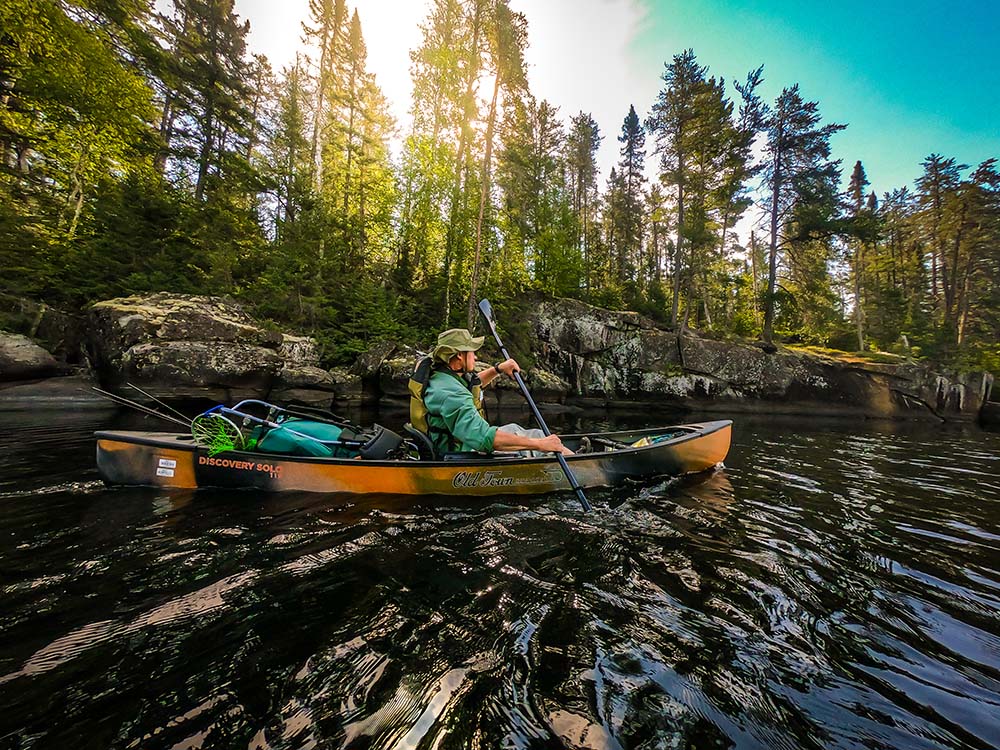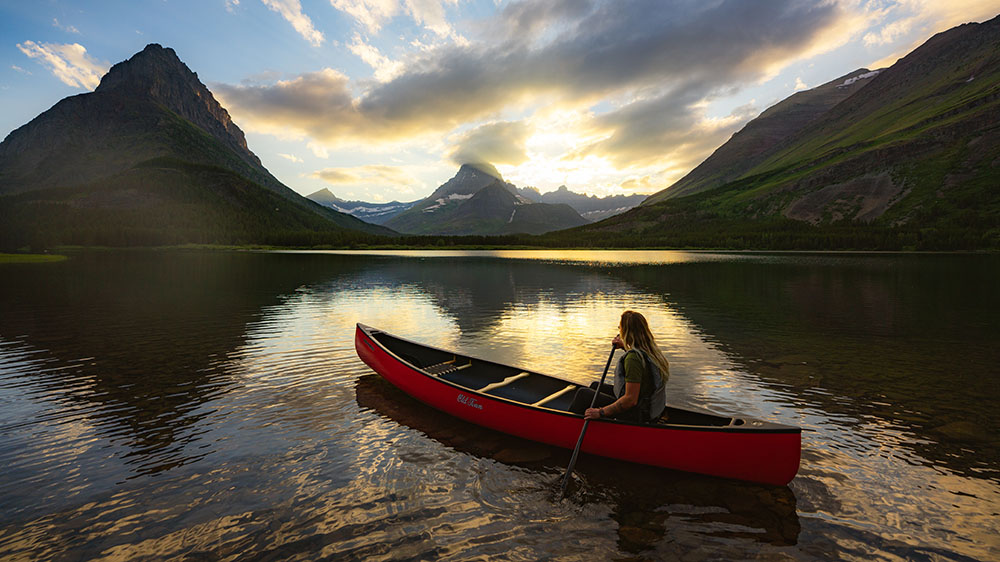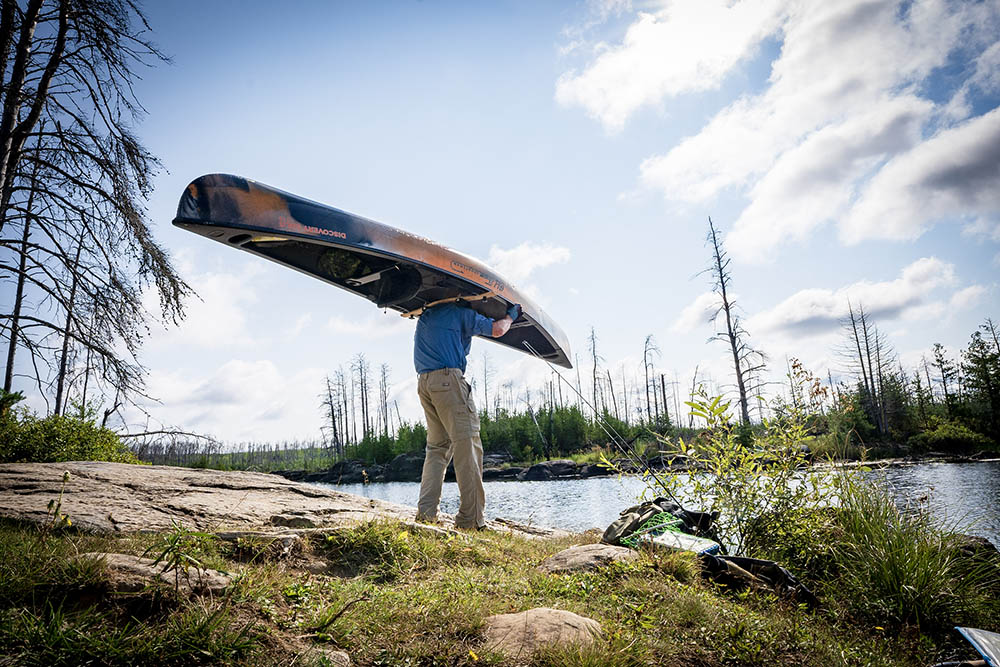Solo Canoeing Tips & Tricks
By: Christi Holmes, Ambassador
Canoeing alone seems intimidating initially, but it will improve your paddling skills and is a great opportunity to spend peaceful time in nature.

Maybe your regular canoe partner is unavailable or maybe you want to be quieter to see more wildlife. Even if you never plan on solo canoeing, you may find yourself paddling alone for short periods of time. For example, if you are fly fishing and want extra room for your back cast, or if you are hunting and need to retrieve a downed duck or decoys.
With a few tips and some practice, you can gain the confidence to paddle alone and even find the experience enjoyable.
Choosing the Right Canoe and Paddle

Many people paddle alone in a regular two-person canoe, but if you'll be doing it often, consider a canoe specifically made for solo paddling.
The Discovery 119 comes in at just 11'9" and weighs just 50lbs. The Sportsman Discovery Solo 119 is the same length but weighs 56lbs. It features a kayak seat and some extra designs for hunting and fishing. The Next Canoe is a little bigger at 13' and 59lbs and combines both canoe and kayak characteristics.
A versatile canoe like the Discovery 133 comes in at 13"3" and 78lbs and features three seats- which makes it ideal for paddling solo in the center seat, or normally with two or three paddlers.
Solo canoes can be paddled with a normal single blade canoe paddle or a double blade paddle, similar to a kayak paddle.
For a single blade option, a slightly longer than usual paddle is ideal. Don't just grab your kayak paddle if you're opting for the double blade option.
Canoe seats are higher than kayak seats, which means you'll want a double-bladed canoe paddle, which is longer than a kayak paddle.
Solo Canoeing Orientation and Position

Standard, two person canoes are designed to have paddlers in the bow and stern. When solo paddling one of these boats, the canoe's balance, or trim, will be off.
Canoes should be level in the water, with slightly more weight towards the stern. If you sit in the stern, the bow will ride high out of the water and can be caught by wind and spun around. If you sit in the bow, it will ride too low in the water and create unnecessary drag.
The most efficient way to paddle solo in a two-person canoe is to sit in the bow seat facing the stern, and paddle stern first. This will help center your weight and you'll have better control of your canoe.
Another option is to kneel behind the center thwart. You'll want knee pads or a piece of foam to kneel on, and maybe a rolled-up towel for behind your knees for longer paddles.
Try various positions and see which is most comfortable for you.
Solo Canoe Paddling

Paddle strokes, like the J-stroke work well to keep your canoe straight while limiting inefficient switching of sides.
The j-stroke starts as a normal stroke, but at the end, twist the paddle blade parallel to the canoe and then pull the paddle away from the stern gently, drawing a "J". Think about turning your hand so your thumb points down toward the water. If you haven't mastered the J-stroke, try the C-stroke or the stern pry.
For videos on these strokes, check out this article on Basic Canoe Strokes.
Solo Canoe Portaging

Nothing makes you feel more hard core than carrying a canoe over your head by yourself. If you're on a solo trip, you'll need to portage your canoe alone. Read tips about solo canoe portaging in this blog.
Pack a tie down strap from your trailer or roof rack on your trip in case you need to drag your canoe a short distance. Simply run one end of the strap through the canoe handle and loop the other end around your waist for easier hauling.
Though it is always safer to paddle with others, with a little practice you will find that canoeing alone isn't so hard and you might decide you prefer it!






